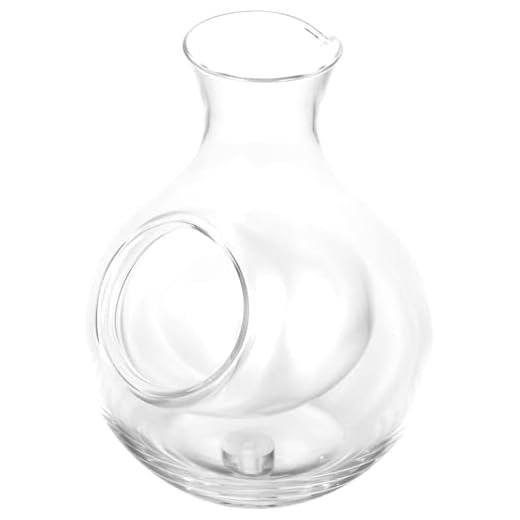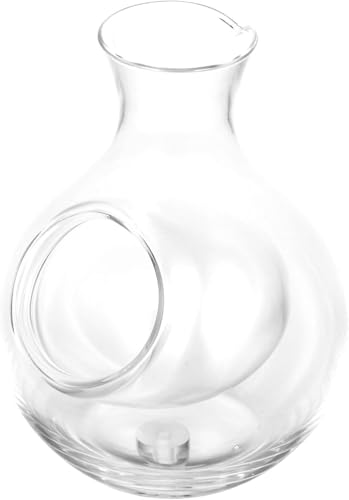



Yes, this popular fermented drink contains a considerable amount of a certain mineral that plays a crucial role in various bodily functions. A standard serving can provide around 200 to 250 milligrams of this nutrient, making it a viable option for those looking to increase their intake.
For individuals focused on heart health or muscle function, incorporating this drink can offer additional benefits. It’s essential to balance consumption with other dietary sources, as excessive intake may lead to unintended health consequences. Moderation is key; enjoying a glass alongside a meal can enhance the overall experience and provide complementary nutrients.
When selecting this type of beverage, consider options with a robust flavor profile, as they often correlate with higher concentrations of beneficial compounds. Always check labels or consult with a knowledgeable source to ensure you’re making informed choices that align with your nutritional goals.
Is There Significant Potassium Content?
The concentration of potassium in this beverage is relatively moderate compared to other food sources. A typical serving might contain about 100-200 mg of potassium, making it less substantial than options like bananas or sweet potatoes. For those monitoring their intake, it’s essential to factor in overall dietary sources rather than relying solely on this drink.
Pairing with Foods
When considering pairing, this drink complements dishes rich in minerals, such as salmon. If you’re looking for a way to enhance your meal, how to cook fresh salmon in skillet is a fantastic option. The combination can balance flavors and elevate the dining experience.
Understanding Potassium Levels in Red Wine
While exploring the mineral content of various beverages, it is important to highlight that certain varieties of fermented grape juice contain notable concentrations of certain minerals. Specifically, the fermented product made from dark-colored grapes has been found to hold a moderate amount of this essential mineral. Typically, a standard serving (approximately 5 ounces) can provide around 100-200 mg of this mineral.
Comparative Analysis of Mineral Content
In comparison to other alcoholic beverages, the concentration of the mineral in this particular drink is relatively modest. For instance, spirits and lighter fermented beverages generally contain lower amounts of this mineral. Below is a table illustrating the mineral content across different types of beverages:
| Beverage Type | Approximate Mineral Content (mg per 5 oz) |
|---|---|
| Fermented Beverage from Dark Grapes | 100-200 |
| Light Fermented Beverage | 50-100 |
| Spirits | 10-30 |
Health Implications
For those monitoring their mineral intake, moderate consumption of the fermented product from dark grapes can contribute positively. It provides a flavorful option without excessive mineral levels. However, individuals with specific dietary restrictions or health conditions should consult with a healthcare provider for personalized advice.
Comparing Mineral Levels in Different Types of Dark Fermented Beverages
Among various options, the mineral concentration can vary significantly. Here’s a comparison of notable types:
- Cabernet Sauvignon: Typically presents a moderate concentration, averaging around 100 mg per liter. This variety’s robust structure often correlates with higher mineral profiles.
- Merlot: Generally exhibits slightly lower levels, averaging approximately 80 mg per liter. Its softer tannins create a more approachable flavor, but the mineral content remains noteworthy.
- Pinot Noir: Often found to be on the lower end of the spectrum, with values around 70 mg per liter. This reflects its lighter body and delicate profile, making it a favorite for nuanced pairings.
- Syrah/Shiraz: Known for its bold characteristics, this type can range between 90 to 110 mg per liter, depending on the terroir and winemaking techniques used.
When selecting, consider factors such as acidity and tannin structure, as these can influence overall flavor and mouthfeel. For those monitoring specific dietary needs, it’s advisable to check individual labels or consult producers for precise information.
In summary, while choices vary, understanding these differences can enhance your experience and pairing capabilities. I encourage you to explore and find what resonates best with your palate and lifestyle.
Health Benefits of Potassium from Red Wine
Moderate consumption of fermented grape juice can contribute to cardiovascular health. This beverage contains a notable amount of a mineral that supports proper muscle and nerve functions. Adequate intake may help in maintaining healthy blood pressure levels and reducing the risk of stroke.
In addition to cardiovascular benefits, this drink can aid in balancing electrolytes in the body. The mineral helps regulate fluid balance, which is essential for optimal cell function and hydration. This can be particularly beneficial for individuals engaged in physical activities or those living in warmer climates.
Furthermore, the antioxidant properties found in this beverage work synergistically with the mineral to combat oxidative stress, potentially lowering the risk of chronic diseases. It is advisable to incorporate this in moderation as part of a balanced diet to reap its health advantages.
For those looking to increase their intake of this mineral, pairing this drink with potassium-rich foods like bananas, spinach, or avocados can enhance overall nutrient absorption and benefits. However, always consult with a healthcare provider before making significant dietary changes.
Recommended Serving Sizes for Potassium Intake
For optimal mineral absorption, a serving of approximately 5 ounces (150 ml) is generally recommended. This quantity allows individuals to enjoy the benefits without excessive consumption.
Here are some guidelines to consider:
- Daily Intake: Aim for 4,700 mg of potassium daily from all sources, including beverages.
- Pairing: Consider pairing with meals rich in potassium, such as bananas or leafy greens, to enhance absorption.
- Frequency: Consuming 1-2 servings a few times per week can contribute positively to your mineral intake.
- Personal Needs: Adjust serving sizes based on individual dietary needs, health conditions, and lifestyle.
Monitoring your total dietary intake is crucial. If you’re focusing on increasing your mineral levels, consider integrating a variety of food sources along with your preferred drink. Keep track of your overall consumption to ensure you’re meeting your nutritional goals effectively.
Factors Influencing Potassium Levels in Red Wine
The concentration of this mineral in fermented grape beverages is shaped by several key factors. Soil composition plays a crucial role; vineyards located in potassium-rich soils tend to produce grapes with elevated levels of this nutrient. The type of grape varietal also significantly impacts mineral content, as some varieties naturally accumulate more of it than others.
Winemaking techniques are another critical influence. For instance, the fermentation process can alter nutrient levels, depending on yeast strains and fermentation methods employed. Additionally, the aging process, whether in barrels or tanks, can affect the mineral profile. Extended contact with the grape skins during maceration is known to extract more nutrients, including this mineral.
Climate and Environmental Conditions
Climate conditions, such as temperature and rainfall, affect grape maturation and mineral absorption. Regions with cooler climates often see slower ripening, which can lead to higher concentrations of various nutrients, including the one in question. Furthermore, irrigation practices can either dilute or concentrate minerals, depending on water quality and timing.
Harvest Timing
The timing of grape harvest is pivotal. Grapes picked at optimal ripeness usually have better mineral composition. Early or late harvesting can result in lower concentrations of this nutrient due to varying levels of sugar and acidity in the fruit. Therefore, careful timing can enhance the overall mineral profile of the final product.
In summary, several interconnected aspects impact the mineral content in these beverages, from vineyard practices to environmental conditions. Understanding these influences allows for better appreciation of how different factors contribute to the final product’s mineral levels.
Alternatives to Red Wine for High Potassium Diets
Consider incorporating beverages like pomegranate juice, which is rich in essential nutrients, including a significant amount of potassium. This tart yet sweet drink not only supports hydration but also offers a unique flavor profile to complement various cuisines.
Another excellent option is coconut water. It’s naturally hydrating and boasts a high concentration of electrolytes, making it an ideal substitute for those seeking to increase their intake of potassium. The subtle sweetness can enhance both mocktails and smoothies.
For a refreshing alternative, try beet juice. This vibrant beverage is packed with potassium and provides a distinctive earthy flavor. It’s particularly beneficial for those focused on athletic performance and recovery, thanks to its natural nitrates.
Freshly pressed orange juice is another viable choice. Not only is it a good source of potassium, but its bright citrus notes can elevate any meal or serve as a delightful standalone refreshment.
Experimenting with vegetable juices, such as tomato or carrot juice, can also enhance your dietary intake of potassium. These juices can be enjoyed alone or used as bases for savory cocktails, adding depth and nutrition to your beverages.
Finally, consider smoothies that incorporate bananas, spinach, or avocados. These ingredients are not only flavorful but also contribute significantly to potassium levels, making your drink both nutritious and delicious.







